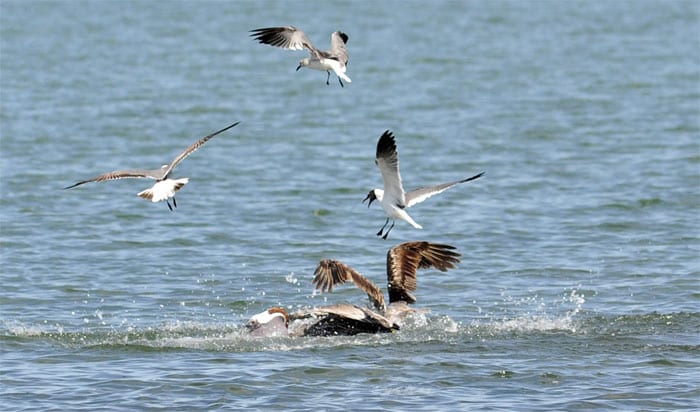Uncomfortable Fishing: Cuba’s Brown Pelicans
Photo Feature by Lorenzo Crespo Silveira

HAVANA TIMES — The Brown Pelican is an animal which can easily be spotted on our beaches or the Cuban coast. It’s characterized by the dark brown feathers which cover its body and it’s large wings, which allow it to skim across the water gracefully. It’s most striking feature has to be its large bill which is connected to a pouch where it keeps its food once it’s been caught near the water’s surface.
Every time I see them fish, their way of flying and the way they plung-dive bill first into the water once they attack their prey, little fish, always astonishes me. As if that wasn’t enough, this way of feeding themselves is often interrupted by other birds that try and take their food straight out of their bills. They don’t even let them enjoy their meal.
Law of survival has put these pelicans to the test and they’re constantly forced to find new strategies to get ahead of the sea gulls and their bothering.
In the following photos, I’ve documented moments of uncomfortable fishing where the Pelican is the key protagonist.

Click on the thumbnails below to view all the photos in this gallery. On your PC or laptop, you can use the directional arrows on the keyboard to move within the gallery. On cell phones use the keys on the screen.




















Beautiful birds that soar so effortlessly. Those who live in Alberta, Canada are privileged to see the pelican (not the brown one) with its 11 ft. wingspan every year when it arrives from the southern US to nest in the north. The immature ones don’t yet have a bump on their beak and many spend the summer in the area of Lethbridge and the Native Indian Blood Reserve (the largest in Canada being 100 km long) where they can be seen soaring thousands of feet above the Oldman river. The mature ones however keep going north for a further 800 km to nest. In the fall they all return south with their new crop of youngsters.
Thanks for the photographs!
Have I missed the point of this . . this . . .nature expose? Or is it an allegory? Or is it being used as a filler here in Havana Times. Estoy confundido.